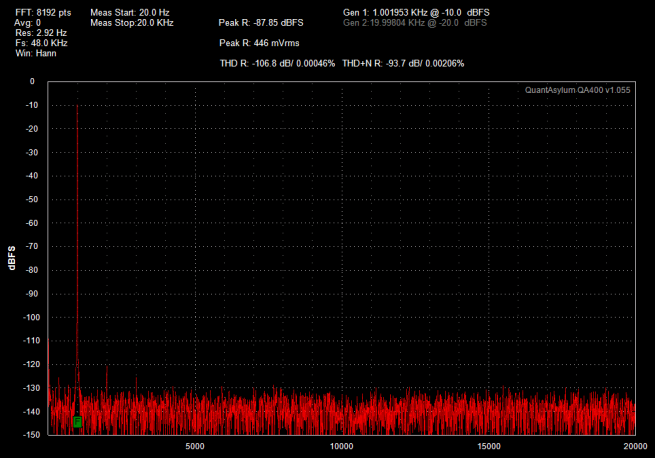I recently purchased a new piece of test equipment; a QuantAsylum QA400 Audio Analyzer. The specs of this unit get close to high-priced audio analyzers from Keysight and Audio Precision. For $200 USD, you get 0.00055% THD inherent, which means the generator wrapped to the input produces a baseline reading like the one below.
 As you can see above, the THD is exceeding spec and the THD+N at 0.002% is exceeding its spec of 0.0038%, both at an input level of -10 dBFS. You will also note that the noise floor of a QA400 sits at about -140 dBFS.
As you can see above, the THD is exceeding spec and the THD+N at 0.002% is exceeding its spec of 0.0038%, both at an input level of -10 dBFS. You will also note that the noise floor of a QA400 sits at about -140 dBFS.
I wanted to measure the THD and THD+N of the ubiquitous LM386N audio amplifier module that is almost guaranteed to be a part of a QRP receiver kit you may own or would buy. The LM386N is also commonly used in low-cost audio amp boards from China via ebay.
The image below shows the result of driving the input of one such LM386 audio amplifier board I bought on ebay several years ago.

The main issue is the noise floor of these amplifiers which sits at about -100 dBFS or 40 dB above the input stage of the QA400. I’ve always felt these amplifiers hissed far too much, even though a -100 dBFS noise floor might seem good on paper.
In a future post, I will offer a better alternative to the LM386 as a low-cost, easy to use audio output stage capable of driving earbuds or an amplified speaker system.
0 Responses to “LM386 THD and Noise measurements”